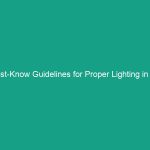Introduction
Good morning team! Today, we’re going to talk about a topic that’s vital for our Workplace Safety: the proper use of extension cords. As we all know, extension cords are handy tools that allow us to power our equipment when outlets are out of reach. However, if not used correctly, they can pose serious risks. Understanding how to use them safely is crucial for preventing accidents and ensuring a safe working Environment.
Understanding Proper Use of Extension Cords
The proper use of extension cords refers to following guidelines that ensure they are used safely and effectively. This includes knowing when and how to use them, understanding their limitations, and recognizing potential Hazards. Many employees think that as long as they can plug it in, they can use it anywhere. This misconception can lead to dangerous situations, including electrical Fires and workplace injuries.
Key Hazards, Risks, and Safety Considerations
When using extension cords, several hazards and risks must be considered:
- Overloading: Plugging too many devices into one extension cord can lead to overheating and potential fires.
- Damage to cords: Cords that are frayed, kinked, or damaged can pose shock and fire hazards.
- Tripping hazards: Extension cords running across walkways can lead to trips and falls.
- Improper use outdoors: Not all extension cords are rated for outdoor use; using indoor cords outside can lead to electrocution.
Ignoring these risks can result in severe consequences, including injuries, property damage, and even fatalities. Therefore, it’s essential to be aware of these hazards and take proactive measures to mitigate them.
Best Practices, Procedures, & Actionable Advice
To ensure the safe use of extension cords, follow these Best Practices:
1. Choose the Right Cord
Always select an extension cord that is appropriate for your needs. Factors to consider include:
- The power requirements of your devices
- The length of the cord needed to reach the outlet
- The environment where it will be used (indoor vs. outdoor)
2. Inspect Before Use
Before using an extension cord, thoroughly inspect it for any signs of damage, such as:
- Frayed or exposed wires
- Damaged plugs
- Kinks or twists along the length of the cord
If you notice any damage, do not use the cord. Instead, report it and replace it with a safe one.
3. Avoid Overloading
Do not plug multiple high-wattage devices into a single extension cord. Always check the cord’s wattage rating and ensure that the total wattage of the connected devices does not exceed this limit. A simple rule of thumb is to limit each cord to one high-wattage device, like a space heater or a power tool.
4. Use Cords Properly
When using extension cords, keep these tips in mind:
- Run cords along walls and avoid crossing walkways to prevent tripping hazards.
- Do not use indoor-rated cords outdoors, as they may not withstand the elements.
- Uncoil the cord completely when in use to prevent overheating.
5. Store Cords Safely
After use, store extension cords in a safe, dry place. Avoid wrapping them tightly around objects, as this can cause damage. Instead, coil them loosely and store them in a designated area.
Regulations, Standards, and Compliance
It’s essential to be aware of the Regulations and Standards that govern the use of extension cords in the workplace. The Occupational Safety and Health Administration (OSHA) provides guidelines on Electrical Safety, including the use of extension cords. Compliance with these regulations not only helps prevent accidents but also protects the company from potential legal issues. Be sure to familiarize yourself with:
- osha Standard 1910.304 for electrical Safety
- Local electrical codes
- Company-specific safety policies regarding electrical equipment
Understanding and following these standards is critical for maintaining a safe work environment.
Employee Engagement & Discussion
Now that we’ve covered the essential guidelines for the proper use of extension cords, let’s open the floor for discussion. Here are a few questions to consider:
- What safety challenges have you encountered related to extension cords?
- Have you ever noticed someone using an extension cord improperly? What happened?
- What additional Safety Measures do you think we should implement regarding extension cord usage?
Feel free to share your experiences and insights. Engaging in these discussions can help us all learn and improve our safety practices.
Conclusion & Key Takeaways
In conclusion, understanding the essential guidelines for the proper use of extension cords is crucial for ensuring Workplace Safety. Remember to:
- Choose the right cord for the job.
- Inspect cords for damage before use.
- Avoid overloading extension cords.
- Use cords properly and store them safely.
- Stay informed about regulations and compliance standards.
By following these guidelines, we can significantly reduce the risks associated with extension cord use and create a safer work environment for everyone. Thank you for your attention and your commitment to maintaining safety in our workplace!


